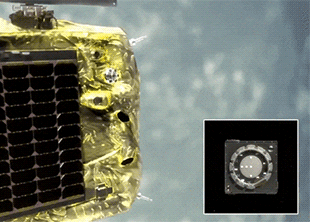The private space company Astroscale has successfully conducted the first test of the technology of magnetic capture of near-Earth satellites as part of the ELSA-d mission. It is expected that this will help to create a device for capturing and data from orbit of spent near-Earth satellites, according to the company's website.
In order to reduce the problem of space debris, which is becoming more and more serious as the number of satellites in near-Earth orbit increases, various options are offered, among which there are projects of specialized vehicles. Some of them are able to catch fragments of debris with a net, others have an adhesive layer for sticking debris. Another idea is to extend the life of satellites already launched into space with the help of others that are able to dock with them, acting as an additional set of engines with a fuel reserve.
The private company Astroscale Holdings is currently engaged in the project ELSA (End-of-Life Services by Astroscale) to create devices for searching, capturing and towing spent near-Earth satellites. ELSA-d was the first mission within the framework of the project, the purpose of which was to demonstrate the basic technologies necessary for docking and garbage disposal.
The mission was launched on March 22, 2021, when two spacecraft were launched into space using a Soyuz launch vehicle. The heavier service module is equipped with a magnetic capture mechanism, while the smaller client module has a ferromagnetic docking plate. On August 25, the service module first unlocked the mechanism, releasing the client module, and then, when it flew a short distance away, started the engines and docked with it again. The entire test lasted several tens of seconds.

Image source: Astroscale
Now the company will move on to more complex maneuvers, which include flying around the client module for its inspection, as well as capturing the tumbling module. The tests will be carried out over the next few months, after which the vehicles will be taken out of orbit.
You can learn more about the problem of space debris from our material "Garbage Belt" .
Alexander Voityuk

